In Episode 157, I explore practical steps for processing emotions and resolving conflicts. I discuss the detrimental cycle of pettiness and the need to recognize the karmic consequences of our actions. I emphasize the importance of identifying underlying feelings and...

Episode 81: How To Break A Habit
Share this Episode
Habits are unconscious behaviors, whether good, bad, or neutral. We call some habits bad because they don’t support our overall well-being and can inhibit spiritual and personal growth. As we recognize the habits we want to remove, we can introduce different habits that replace the bad with the good. Let’s talk about making a conscious choice to look at our habits and get curious about how we can change them!
To subscribe to the podcast, please use the links below:
If you like the show, we would be so grateful if would leave the show a review on iTunes as well as leave a rating on Spotify. A couple of minutes of your time can help the show immensely! Thank YOU!
HOW TO BREAK A HABIT
SWEET OR SAVORY?
Do you have a routine that’s been a part of your life for so long that you do it on autopilot? It may not even occur to you that this is a habit you must break. When I notice I am attached to a particular thing, I love to examine the why behind what I do.
A few years ago, I embarked on a journey to remove foods with added sugar from my diet. During this time, I realized how much sugar I was actually consuming and how seamlessly it became a ritual for me over the years. I recognized that I had been reinforcing my sugar consumption every time I went to the grocery store! How? I always, without fail, chose a sweet treat to eat on the way home from the store!
To take it even further, I realized this was a habit I had formed from a pleasant childhood experience with my mother, who treated us the same way after our trips to the store together. It was an incredible experience, a heart-warming memory, and a habit I wanted to break.
One way I could break the bad of eating a sweet treat as I drove home from the store was to choose a salty, savory treat in its place. I was able to keep the ritual while breaking the bad habit!
REWARD CENTERS
Any discussion about how to get rid of bad habits must include some examination of addiction. One can lead to the other easily, and it's important to understand why. When we participate in pleasure-based habits, we get a dopamine hit to our brain that tells us, "This is good. This is nice. We want more of this."
Some of us get that hit from the ritual of the experience and have an easier time finding alternatives to recreate the practice without the vice associated with it. For example, a cocktail after work can be replaced with a mocktail and still give that person the same pleasurable feeling.
For those with more addictive personality traits, replacing a bad habit with something new can be more difficult, but it's still possible. This is a personal experience; some may have a more challenging time breaking bad habits than others.
Don't compare your habit-breaking journey to anybody else's. Everyone is different!
LET’S GET HONEST
Of course, the first step in breaking habits is to recognize that they are there! Just get honest with yourself.
❓ How is the habit serving you?
❓ How is it not serving you?
❓ Is it beneficial to have this habit anymore?
❓ Am I getting a dopamine hit when I indulge in this habit?
You might be experiencing massive dopamine hits for that behavior that rates this habit as more pleasurable for you than others, making it more challenging to break. When breaking bad habits, you must compare yourself only with yourself and no one else.
If you are actively breaking a bad habit, let go of other people's experiences and expectations, and know that it will sometimes be challenging.
True growth happens when you get uncomfortable. - Amy Robeson CLICK TO TWEET
RECREATE THE RITUAL
When I realized I was craving ritual rather than a sweet treat during my no-added-sugar journey, I could keep that ritual intact without indulging in the habit I was trying to break. So often, our habits are more about these practices than the elements within the ritual itself. When we look at the behavior with curiosity, we can find different ways to honor the tradition in a new, healthier way.
Let's say you have an alcoholic beverage every night after work, and you want to cut this down to one or two drinks per week or perhaps altogether. You can replace that habit with another type of drink. Anytime I'm craving a glass of wine, I will ask myself, "Am I really craving wine, or am I craving the ritual?"
We often crave the comfort of the ritual that includes that drink or food rather than the food or beverage itself. I have learned to enjoy making fancy non-alcoholic drinks with fancy syrups or even finding refreshment in flavored sparkling water or kombucha. That usually will satisfy the craving because the body and brain are saying, "I want something, I want something." By giving the brain something to associate with that pleasurable dopamine hit, you've now changed your reward center from the beverage to the ritual. This is an effective and powerful way to break bad habits and replace them with healthier alternatives.
Recreating rituals is a powerful way to break bad habits!
VISUALIZE THE NEW YOU
Visualization is a powerful tool for breaking a bad habit. For example, if you are on a journey to quit smoking, you can replace stepping outside for a cigarette, pause, and visualize taking a long, deep breath of fresh mountain air. Visualize doing the opposite of what your habits would have you do.
Visualize the positive outcome of breaking that bad habit. If you are on a weight journey to either lose or gain weight, visualize yourself at your ideal weight, participating in activities in that new, healthier body you've created.
Visualization is even more powerful when you add gratitude into your life. When you visualize the outcome, pour an abundant amount of gratitude into the visualization.
"I'm so happy! I'm so excited! This is so amazing! I'm so grateful!"
Pouring gratitude into your visualization will change the chemicals in your brain, and that’s a dopamine hit we love to experience. Visualization is another way to experience that pleasurable response without indulging in the bad habits you are trying to break!
PEOPLE NEED PEOPLE
Some habits we can break on a solo mission, but sometimes we need more support! If you’ve been struggling with a habit for quite some time and have not successfully broken it, perhaps it’s time to call in some reinforcements! There is nothing wrong with getting support. The more we lean into support systems, the easier it can be to overcome certain habits, behaviors, and thoughts that no longer serve us. Asking for support can be the first step to getting help and having a breakthrough!
Support looks different for everyone. It might be:
- Watching YouTube videos
- Reading books to gain perspective on your habits
- Getting someone to support you one-on-one, like a therapist or life coach
- Get an accountability partner struggling with a similar habit as yours
People need people, and we all need support!
Know that you can change. You can break old habits and make new ones! You can recognize the habit, replace it with something wonderful, and still enjoy the rituals in your life that mean so much to you!
The more we lean into support systems, the easier it can be to overcome certain habits, behaviors, and thoughts that no longer serve us.
Podcast: Play in new window | Embed
Subscribe: Apple Podcasts | Spotify | Amazon Music | Android | iHeartRadio | TuneIn | RSS | More
If you enjoyed this episode with Amy Robeson, we would love to invite you to check out other inspirational episodes by clicking here. Enjoy!
Check Out More of Amy Robeson Podcasts
Episode 156: Harnessing Light Language Transmission: A Guide to Transformative Healing
Are you ready for a new beginning? Let’s take a journey together using light Language. In this powerful episode, you will receive a light language transmission journey to support new beginnings and fresh starts. During the healing you will be guided to release...
Episode 155: Self-Reflection: The Key to Building Resilience and Emotional Intelligence
In today's episode, we're diving deep into the power of overcoming distractions and embracing inspired action to achieve our deepest desires. Join me as we explore how acknowledging distractions and taking accountability can truly empower us on our journey of...
Episode 154: How Goal Setting Fuels Your Journey to Personal Fulfillment
In today's episode, we're diving deep into the power of overcoming distractions and embracing inspired action to achieve our deepest desires. Join me as we explore how acknowledging distractions and taking accountability can...
Episode 153 Uncovering Ancestral Stories: Soul Chats with Shanna Varva
In this powerful Soul Chats interview, I had the pleasure of chatting with one of my favorite people, Shanna Varva! Shanna and I have a shared interest in ancestry work and the importance of connecting with one's ancestors. Shanna shares her journey of discovering...
Episode 152 - Time to Thrive: Unraveling Stress and Time Management Secrets for a Joyful Life
Welcome to today's episode, where I channel a divine message from the Guardians of the Akashic Records. The focus of today's discussion is time and how it directly impacts your nervous system's response. Taking inventory of your activities throughout the week can...
Full transcription of the episode:
Hello, and welcome to today's episode. We all have habits. Let's be honest. Some habits are healthy, some are neutral, and others are quite dangerous. Dangerous to your health, dangerous to your mental health, and dangerous to your future possibilities.
How we define danger could be based on a wide range of habits. Some habits can be a life-threatening danger, whereas others are just not good for you, and we want to look at our habits with a lot of love and a lot of compassion. I always love doing little habit-breaking journeys throughout the year whenever I notice I'm very attached to something in particular.
A few Januaries ago, I did a no added sugar journey with one of my friends. It was probably one of the best ways that I have found to break a sugar habit. I got really honest with myself about the amount of sugar I was consuming at the time. And what I realized is one of the bad habits that I had that was reinforcing this sugar addiction was anytime I would go to the grocery store, I always had to have a snack whenever I was driving home.
It's something that my mom would do with us. Anytime we would go to the grocery store, we would always have a snack on the way home in the car. It was awesome.
And so anytime I would go to the grocery store, I would buy a sweet treat, and then I would eat it. And so one of the ways that I was able to break this habit of eating a sweet, delicious treat every single time I drove home from the grocery store was to buy something salty, buy something savory, buy something different than a sugary treat. And let me tell you, it was just as satisfying, and it was super uber duper helpful when creating a new habit to break an old habit.
So let's talk about how we can break habits that are no longer serving you. First, you want to get really honest with yourself. I think this is always the first step in anything when we ever want to make a change. Just get honest with yourself. How is the habit serving you? How is it not serving you? Is it beneficial to have this habit anymore?
Research has shown, 70% of smokers know that smoking is bad for them, yet they continue to smoke because it's hard to break that habit. People that use drugs and alcohol are also bad habits to break. But it's hard for people scrolling on social media. A numbing habit can also be a habit that's hard to break. And so we have to look at our reward centers.
So let's talk about pleasure-based habits. Pleasure-based habits can be harder to break. For example, that sugary treat that I was eating any time I went to the grocery store on my way home was a pleasurable behavior because it would send a dopamine hit to my brain that would reward me for that behavior.
And so if you are a person that has a habit that brings you joy, but you know it's not good for you, we have to recognize like, "Oh, I'm getting a dopamine hit, so how can I get a dopamine hit in a different way that will serve me?" And please note that when we're breaking habits, there is no one particular good way for it to work for everyone. Everyone's different. Everyone's addiction behaviors are different as well.
I know for me if I notice I have an addictive behavior, I usually can nip it in the bud really quickly. My husband, and my mom, those two people, have very addictive personalities. And so sometimes, people that have addictive personalities, that's a little bit harder. So don't compare your habit-breaking journey to anybody else's.
Also, know that if someone says, "Well, I quit that or I stopped doing that; it only took me two days or three days," and you're still struggling after two weeks, know that they're not in your shoes, their brain is not the same as yours.
You might have been having huge dopamine hits for that behavior, and it was a much more pleasurable behavior on a higher scale for you than it was for that person, or they had other support systems in place. So know that if you're about to break a habit, let go of the noise, let go of other people's experiences, and know that it's going to be challenging at times. And it's okay when you challenge yourself when you get uncomfortable. That's where true growth happens.
So a couple of ways that I really like to break a habit is to, one, recognize the behavior and choose a different behavior. And so for me, sweet treat, salty treat. So I had to switch the behavior with something else so I could still get that dopamine hit, but I could stop doing the sugar. Or let's say you want to stop drinking or not have a drink after work; you can replace that behavior with a different type of drink.
So for me, I'm not a big drinker. I might have a glass of wine every once in a blue moon. It's not something that I struggle with.
But I grew up in a household where my stepdad was an alcoholic. Alcohol is a very real thing for some people, and it's very challenging. So let's say you want to have an alcoholic beverage after work, and you have one every night, and you're really wanting to cut this down to maybe just having one or two drinks a week or maybe just cutting it out altogether. You can replace that habit with another type of drink.
So anytime I'm craving a glass of wine, let's say I will ask myself, "Am I really craving that, or am I craving the ritual?"
Because a lot of times, we're craving the ritual of having that particular thing. And so, for me, I will then go and make myself a fancy non-alcoholic drink. Sometimes it might just be a kombucha, or it might be some sort of flavored sparkling water, or I might actually get some fun little syrups out or something like that where I make myself a non-alcoholic drink. And that usually will satisfy the craving because what the body and the brain is saying is, "I want something, I want something. I want something."
And so if you give them something and not the thing that you're used to doing in the ritual after work, it will allow you to have the dopamine hit that it's looking for. This is also super effective when it comes to just other habits as well.
So look at the actual ritual that you have created. So let's say you go to work every day, and every day at 09:00 a.m., you go to the vending machine and get a soda. That is a ritual that you've created at 09:00 a.m. So instead of going to the vending machine to get a soda, you can go to the water cooler and get a drink of water. Or you can go somewhere else in your building or your work that you go to, and you get something else that satisfies that craving you're looking for.
And this can also be super effective with replacing behaviors with another behavior. So let's say you want to let go of a behavior that's no longer serving you. You decide you want to focus on a new behavior. Some people might go, "I'm going to train for a half marathon, or I'm going to train for a marathon, or I'm going to go start this exercise routine, or I'm going to call a friend every day after work for the next 30 days so that I take my mind off of doing the very thing that I'm used to doing right after work."
And guys, I'm using a lot of work examples because everything in our lives revolves around routines. And so know that if it's not work, you can also know what am I doing in the morning, what am I doing in the afternoon, what am I doing in the evening for habits and behaviors that aren't serving me. And then you look at the sandwich; what are they sandwiched in between? So we do a lot of things in our life on autopilot.
For example, you can go and drive down familiar roads without actually paying attention because you're used to being on that road, and so the brain goes into autopilot. You get into it like a hypnotic state. Have you ever driven before where you're like, "Oh, how did I get to this stop sign?" It's because your brain and your body are in a hypnotic state because they're familiar with that particular area or that particular road.
And if you look at our habits and where you can sandwich things that are no longer serving you in between things that are either neutral or positive, you can sandwich new habits in between them to allow yourself to keep moving forward.
Another effective way to break a habit is to use a visualization. Visualization is really, really powerful. You can pause at any time. Let's say you're wanting to quit smoking instead of going out and smoking; you can visualize yourself breathing the fresh mountain air. You can visualize yourself doing the very opposite thing that you want to do. Also, another way to visualize is to visualize the positive outcome of breaking that habit.
And so, let's say you want to lose weight or gain weight because there are people out there that want to gain weight, and there are people out there that want to lose weight. So you can visualize yourself at the weight you want to be at, and you can visualize yourself doing something positive at that weight. Let's say you visualize yourself running, or you visualize yourself sitting with a family member chatting.
Visualization is really, really powerful, especially when you add gratitude to it. And this is where you visualize the outcome, and you just pour an abundant amount of gratitude into the visualization like you're so happy, I'm so excited, this is so amazing, I'm so grateful. This will allow you to really start to change the chemicals and your chemical response to the outcome that you're wanting to achieve.
The other thing that I really love to do when it comes to breaking habits is have a support system. So you might be struggling with a habit you've been struggling with for quite some time and have tried everything under the sun. Maybe it's time to get individualized one-on-one support to overcome the habit itself. And there is nothing wrong with getting support. I think that, as a society, we lack support.
I think that the more we lean into support systems, the easier it can be to overcome certain habits, certain behaviors, and thoughts that are no longer serving us. And asking for support can be the very first step for you in getting help and having a breakthrough because you've already been honest with yourself.
You've had an honest conversation with yourself where you're like, "Yeah, this is no longer serving me. I've tried everything that I need to try. What if I try something different?" And support looks different for everyone.
It might be watching YouTube videos. It might be reading books. It might be getting someone that supports you one-on-one. It might be talking to a therapist. It might be talking to a psychologist. It might be working with a doctor. It might be working with some sort of health professional or a life coach or whatever.
One-on-one support is super valuable and super helpful, and that one-on-one support can look different. Again, it could be a book, a video, or it could be one on one, face-to-face, or video with someone where you're receiving one on one support. So don't underestimate the amount of support that you can have. You can have an accountability partner as well.
As I said, when I did my no added sugar journey, I did it with a friend, and it was so helpful because we would text each other and say, "All I want is some sugar right now," or, "I really am struggling with this today." And we would be each other's support system, where it'd be like, "You can do it. You're strong." And it was an amazing thing to have.
And they say it takes 21 days to break a habit. I'm a big believer in it. It really does that. I do think doing something for 30 days allows the new habits to really become ritualistic. And so if you're wanting to, let's say, cut out sugar or cut out gluten or cut out something that's not serving you and you're wanting to take a break from it, you can definitely do that.
Decide how long it needs to be for the break and define the rules because I think that sometimes we go into breaking a habit without any guidelines, and it can be challenging and hard. And so for me, when I did the no added sugar, I'm going to underline added sugar, that means I could eat fruit. Not an excessive amount of fruit, but I can eat fruit because it has natural sugars in it.
What I was looking to do was break the habit of all the sugary treats that I was eating at that moment in time and really reset my taste buds and reset my brain into craving other things besides whatever little cookie or whatever little thing I was eating at the grocery store on my way home because it became an excessive habit. And it's been super uber duper helpful since I did that three years ago. Do I still eat treats on my way home from the grocery store? Absolutely. Am I eating sugary treats?
Very rarely do I eat sugary treats on the way home because I usually look for something savory or salty. And one of the things I would do is go to the olive bar and get something that was salty, and it was a quick thing or something else. It just depends on what I am in the mood for.
So know that you can change. You can make new habits. Two more things I want to share. One is that if you're wanting to, let's say, cut down on screen time, you can set a timer on your phone that allows you to have a certain amount of time. And then the timer reminds you. I love timers for things because timers are a great way to create habits. So let's say I'm not really wanting to clean up my house. And I have a toddler, and she likes to destroy things within 5 seconds. And I had this last night.
She had stuff everywhere. And a habit for me that's healthy is making sure my house is picked up before I go to bed. I want clean surfaces, but sometimes I don't want to do it. And so creating a new habit about picking up is setting a timer going, "I'm going to work on this for five minutes, or I'm going to work on this for ten minutes."
And that is such an effective tool because your brain can go, "Okay, I can do it for five minutes," because otherwise, your brain thinks, "This is going to take forever. I don't want to do this." And there's every excuse that the brain wants to go through, and you will find a reason to sit down and not do the thing that you're not wanting to do. So timers are super effective. Also, looking at where the trigger is in relationship to you and moving the trigger out of relationships. Let me give you an example.
Let's say you're having a hard time scrolling on social media, and the timer thing isn't working for you. You can literally delete the app off your phone, or you can move the app from the screen that you're used to entering it from and move it all the way back to a different screen or into a different inconvenient place. So the trigger is not there. And let me tell you, this is super effective because it will show you like, "Oh, I'm going to that app. Oh, it's not there. I have to actually work to get to the app itself."
I moved all my apps. I moved my apps around a lot just because I noticed when my behavior was starting to get to a place where I didn't like it, and I have found that if I move it all the way to the back, I will not go back there. I will not go to the fourth page of my phone unless I really need to access that particular app for work.
And for me, I have an online social media business. I actually need the app for work sometimes because it's easier to go into the app versus going on to the computer. And so I found that it works the best that way. So noticing the trigger can also work for, let's say, you're walking past something.
Let's say you are at work and have someone who notoriously takes you off task every day. You walk past their desk, and all of a sudden, you guys start chatting, and you're 20 minutes into the chatting, like, "Oh, my goodness. Like, this is not working for me." So maybe the habit is to not walk past their desk and wait until that person goes for a bathroom break to walk past their desk for something else. Who knows? I have no idea.
But the key is you got to look at where the habits and the triggers are and move the trigger. Remove yourself from the trigger, and that could be moving the app, walking past someone's desk at a different time, or avoiding the vending machine. Whatever the trigger is, you replace the trigger with something else that's more effective for you.
All right, my friends, you are going to break some habits. You're going to have a great time recognizing the habit, and you're going to give yourself a lot of grace, a lot of love, and a lot of compassion. I hope you enjoyed today's episode. Make sure you like and subscribe, and I will see you again soon. Bye.
Share this Episode
Disclaimer:
All media content provided by Amy Robeson and Love, Light, & Yoga LLC is intended for entertainment or educational purposes only. None of this content is intended to offer, or replace qualified medical or health-related advice. All guided meditations and healings are for relaxation purposes. The author accepts no responsibility or liability whatsoever for any injury, loss, or damage in any shape or form incurred in part or in whole, as a direct or indirect result of use or reliance upon the information and material presented here.
Do not watch or listen to any healings or meditations while driving or operating machinery where it is not safe for you to relax and fall asleep.


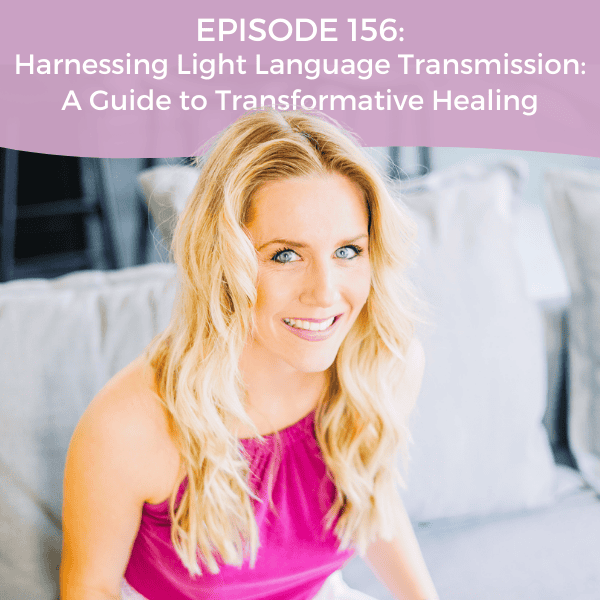
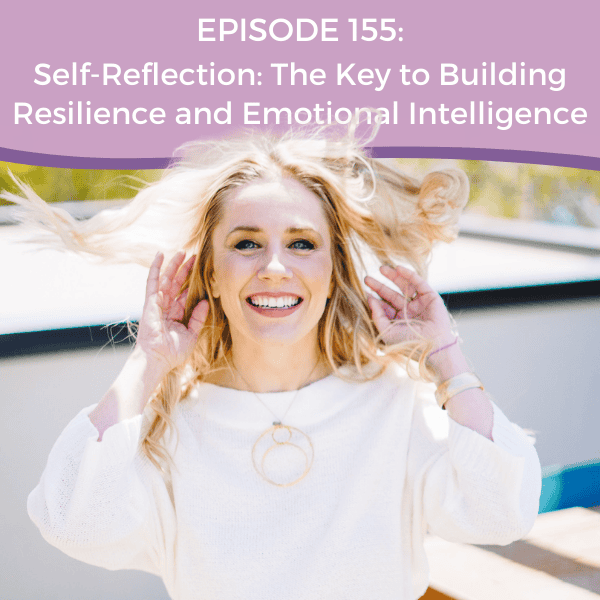
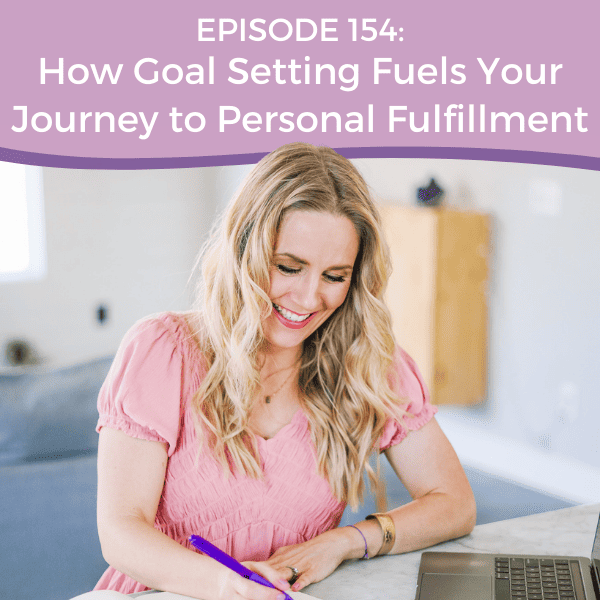
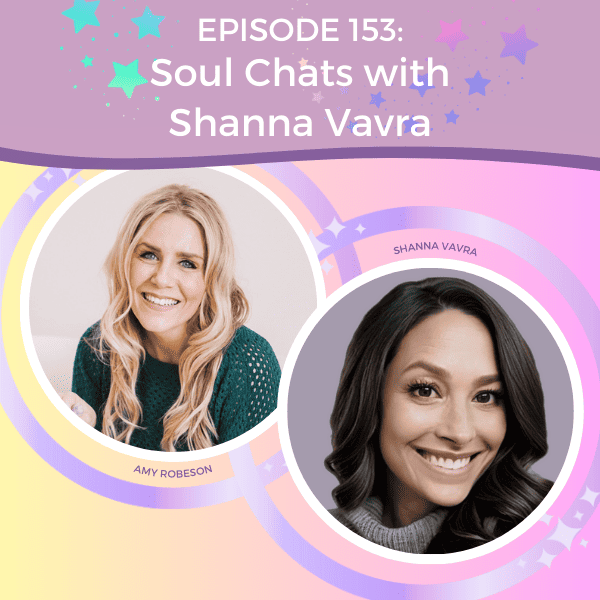
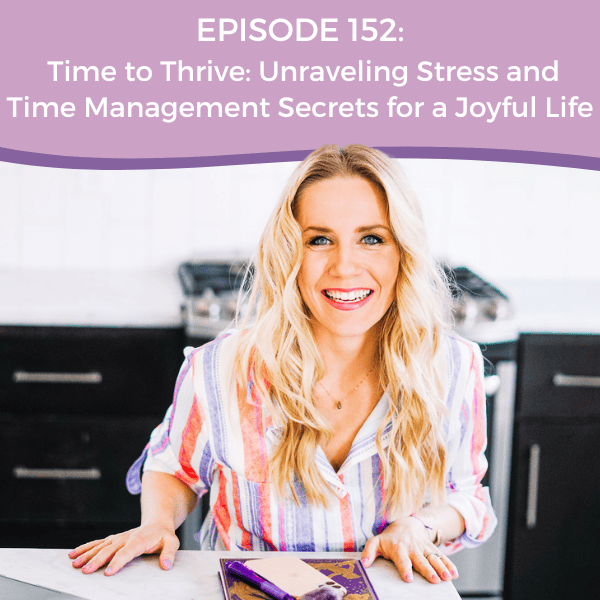
0 Comments